
Some semi-regular musings on racing and life in a COVID-19 Pandemic Quarantine World
Stock racing at all levels fights stereotypes the sport has been labeled with for decades.
Some would go as far as to say that stock car racing has been unfairly defined by those stereotypes for the length of its existence.
We all know the terms used by so many when describing stock car racing and the people involved, backwoods hicks, rednecks, racists just to name a few.
The big one being racist. Is stock car racing today infused with any more racism than say Major Leauge Baseball or the NFL or PGA golf? It’s hard to quantify any legitimate measure of that when there’s no actual way to measure beyond perception. But you can bet if you asked 100 people what major league sport in America is most defined to be racist most would immediately blurt out NASCAR.
That’s an unfortunate fact when you consider NASCAR and short tracks across the country have taken great strides over the last two decades to try to shake those labels that many use unfairly to define the sport.
And then comes those days when all you can say is “You can’t fix stupid.”
During an exhibition iRacing event on Sunday night NASCAR Cup Series star Kyle Larson dropped the N-word over a live stream broadcast of the event. The clip immediately exploded across social media. Larson, who offered a video apology on Monday, was suspended indefinitely by NASCAR.
Give NASCAR and some short tracks a lot of credit for making the most of a tough situation for everybody by using iRacing to offer fans a way to see their favorite competitors in live action simulations during the shutdown of the sport. One has to imagine the last thing the NASCAR public relations department expected was to have to be dealing with issues like the one created Sunday by Larson.
Unfortunately the reputation of NASCAR and short track racing too often ends up as the victim of the voices of ignorant individuals.
Just last week a well-known NASCAR Whelen Modified Tour crew member posted a joke on Facebook about wearing a Klu Klux Klan hood “to be safe at the store”. You just sit back and wonder why? And you realize these are the reasons why no matter how hard those in the sport try, the actions of one person in a group of 1,000 will only unfairly magnify perception to those who aren’t involved.
What some people within the sport don’t understand is that while racing might be no more or less racist than the NFL or the PGA, the long-standing perception to this day hurts the sport. There’s a reason why a local TV station will too often highlight a small town 5K road race somewhere over say a major short track racing event, and it has everything to do with the perception of how those in mainstream journalism directing coverage perceive the sport. And that might be unfair, but people continuing to be openly stupid only give that local TV producer ammunition for the argument as to why they don’t want to be involved with racing.
Amazing Grace
If this video of Andrea Bocelli on Easter Sunday outside of Duomo Cathedral in Milan, Italy doesn’t move you I’m not sure what to say.
Binge Watching
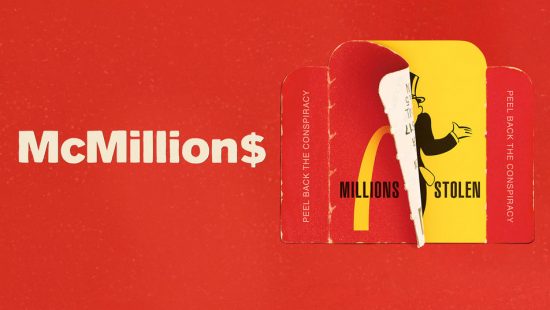
This past weekend I did a quick run through of the fascinating docu-series McMillions, which is available on Amazon Prime Video and Hulu.
The six-part series was originally released on HBO in February of this year.
The series dives into the McDonald’s Monopoly game scandal from 1989 to 2001. It looks at how one man – Jerry Jacobsen – who worked for Simon Marketing, the company overseeing the contest, had access to winning game pieces and how he created a network of very colorful characters to be the chosen winners. It’s a mesmerizing look at how the lure of easy money roped so many people into unwittingly breaking the law.
The step-by-step stories through the criminal tree created by are truly gripping and the interviews involving the FBI agents involved in the investigation are marvelous.
McMillions earns four out of five snacks on our Quaratine Snacks Rankings.
McMillions

Digging Through The Archives
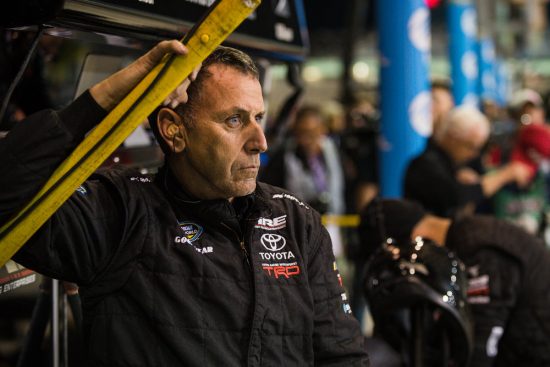
Back before the days of RaceDayCT.com I spent 19 years working as a reporter for the Hartford Courant.
When I was just a young reporter on the racing beat roaming the garages of New Hampshire Motor Speedway I met Peter Jellen, then the hauler driver and over the wall gasman for Bobby Labonte’s Joe Gibbs Racing team on NASCAR’s Winston Cup Series (now NASCAR Cup Series).
Almost immediately after meeting Jellen for the first time I realized there was no line of demarcation of reporter/subject when it came to talking to him. The minute you met Peter he was your friend, simple as that. Jellen grew up in Stafford, the town where I had moved to as a teenager, that only intensified the easy chatting experience.
The first thing I remember about meeting Jellen was that his enthusiasm and passion for what he did was off the charts and it was a passion he wanted to share with anyone that would listen.
I covered my first race weekend at New Hampshire Motor Speedway in 1997, and typically my first trip into the garage for each event quickly involved going to catch up with Peter.
Over the years Peter had mentioned that someday I should ride to a race with him. At first we talked about me meeting him in Stafford on the way to Loudon, N.H. and riding shotgun in the Joe Gibbs Racing hauler for the final couple hours of the trip. It was an appealing idea, but I didn’t think it would make much of a story.
In 2001, after I had done a feature on Peter, he had mentioned the idea of me flying to Charlotte and doing a full ride from the team headquarters to Loudon, N.H. for a race weekend.
The idea seemed better than a two-hour ride, but the logistics of trying to make that all part of race weekend in Loudon didn’t work right for me. Peter and I talked and we came up with a grand plan. I would meet him at the Winston Cup Event at Pocono Raceway, ride shotgun with him in the Labonte hauler back to the Joe Gibbs Racing headquarters in Huntersville, N.C., spend the week in the shop at Joe Gibbs Racing and then ride with him to the Brickyard 400 in Indianapolis Motor Speedway and spend the weekend embedded with the team. I figured it was an idea my bosses would quickly reject. I pitched the idea of doing a weeklong series embedded with a NASCAR Winston Cup team and ending the series with a long feature on hitting the roadways riding shotgun with Jellen and the bosses went for it.
And off I went with Jellen. It was an amazing experience to say the least, one I’m always thankful Jellen made happen. It truly stands as one of my greatest memories of covering motorsports. Below is the feature that ran in the in the Hartford Courant in Aug. 2002.
ONE FOR THE ROAD – By Shawn Courchesne – Aug. 4, 2002 – The Hartford Courant
It’s 9:50 p.m. on Interstate 74 somewhere in Kentucky and Peter Jellen is relaxing.
Jellen, responsible for getting Winston Cup driver Bobby Labonte’s No.18 Interstate Batteries-sponsored cars back and forth to events, is talking to his wife, Susan, on a cellphone.
The combination of the dull hum of the diesel engine of the massive 18-wheeler and the riffs of Jimi Hendrix quietly playing on the radio are calming.
Suddenly the peaceful state is jarred into chaos.
Jellen drops the cellphone and grabs for the two-way radio that keeps him in contact with the truck hauling the No.20 Home Depot-sponsored cars of Tony Stewart behind him.
He knows he can’t save himself, but he wants to help Scott Crowell, driving the truck behind him.
“Oh [shoot]!” Jellen screams as he grabs the radio microphone. “Alligator! Alligator in the road, Scooter!”
And with that, Jellen’s truck slams into a blown-out truck tire in the middle of the lane.
Jellen pulls the truck into a rest stop a half-mile ahead to inspect the damage. Crowell pulls in right behind. Jellen is clearly jolted.
“I didn’t see it till the last second,” he tells Crowell, who avoided the tire. “It was just there.”
After inspecting the truck, Jellen finds that the front license plate bracket is bent backward, one of the three yellow lights below it is knocked out and one of the fog lights is bent out of place.
“Well, you just witnessed firsthand the hazards of the road,” Jellen says. “Danger looms on every mile of this thankless job.”
It’s 9 p.m. in Long Pond, Pa., on July 28 and the paddock area, which for the past three days had been the epicenter of activity during the Pennsylvania 500, is all but deserted. A handful of Winston Cup transporters remain.
After 14 hours working as a member of the crew at the race, Jellen emerges from a shower and sidles up to the already running bright green truck and trailer with a giant rendering of Labonte’s No.18 car on the side.
He reaches up, grabs the pull bar at the door, and yanks his 170-pound body up. In one fluid motion, he is behind the wheel of the rumbling rig.
Jellen reaches behind and throws some paperwork on the bed in the sleeper section behind the front seats. Not surprisingly, the bottom bunk is covered with Bobby Labonte sheets and comforter. There’s also a refrigerator, TV and VCR in the sleeping area, which has enough room to stand and walk around comfortably.
“OK, we ready to do this?” Jellen says. “Just you, me and the road now, pal.”
Jellen pulls out some eye drops, generously loading each eye.
He needs it. A 10 1/2-hour return trip through the night to the Gibbs Racing headquarters in North Carolina looms.
The truck is pulling a 53-foot trailer with two cars loaded in the top bay and a full workshop and lounge in the bottom bay. The truck cost about $300,000, the trailer $125,000.
“With everything loaded up here, cars, equipment and all, we’re rolling down the road at a worth of over a million dollars for everything,” Jellen says.
The Parade Of Trucks
On the short stretch of pavement between the track and the outer track access road, fans are lined five-deep, as if they’re waiting for a parade. Most fans cheer wildly at the sight of the truck. Some aren’t so excited.
“Labonte sucks,” screams one fan with a beer in hand and what looks like his T-shirt tied around his head.
Rounding the bend onto the roadway, a boy looking no more than 10 glimpses the truck and begins wildly waving both hands in a thumbs down motion.
Jellen is unfazed as he talks to his wife on the cellphone. He blows the truck’s thunderous horn at fans without even looking at them.
At the end of the track access road, Jellen turns right onto Route 115, where three lanes of traffic are slowly creeping north on the 3-mile trek to I-80.
Most fans walking along the route seem satisfied simply with a toot of the horn from Jellen.
Some aren’t as easy to please. About a half-mile before I-80, the truck jerks to a halt in traffic. A man and woman stand on the roadside grass waving to get Jellen’s attention.
“Give me a hat,” the man screams.
“Sorry, don’t have any,” Jellen calmly yells back.
“You suck,” screams the fan.
Jellen shakes his head.
At 9:30, the truck reaches the entrance to I-80. After 4 miles of herky-jerky, stop-and-start driving, “Peter Rabbit” finally gets to open up the big diesel engine under the hood of the Volvo truck.
“That wasn’t too bad,” Jellen says. “Better than most tracks. It’s amazing at these places. They have four days to get 100,000 people into the place, and then four hours to get them out.”
By 10 p.m., Jellen reaches I-81, which will take him through Pennsylvania, into Maryland, then West Virginia and Virginia, and nearly to the North Carolina border.
There’s No Escape
Jellen, 40, has been driving Winston Cup transporters since 1989, when he started on a volunteer basis for Alan Kulwicki.
Of all places, he moved to the Charlotte, N.C., area in 1988 to get away from racing. The Stafford native had been involved in local racing since he was a youngster and decided it was time to start a new life in the booming South. When Kulwicki was building a shop near his home, Jellen couldn’t resist the urge to introduce himself and offer help. After all, it was the big time, Winston Cup.
He was hired full time to drive for Kulwicki in 1991.
In all that time, he says he has never been in as much as a fender-bender with one of his trucks. Jellen explains that if he feels the least bit tired, he will pull over.
“If Mr. Sandman decides to knock on my door, trust me, I’m pulling over once my eyes feel heavy,” Jellen says. “I’ll stop. There’s no doubt I’ll stop. There’s nothing in this truck that’s worth more than my life. I promised my wife years ago that she would never get that phone call. It won’t happen.”
As the traffic along I-81 begins to thin, the chatter on the citizens band radio is perking up.
“You hear some real crazy stuff on that thing,” Jellen says. “Truck drivers are politicians, lawyers, doctors and psychologists. They all think they’re experts on something.”
The truck hits Maryland at midnight and is in West Virginia 20 minutes later.
Jellen drives in the left lane of the two-lane highway. There’s a Pontiac Grand Am going at the same speed in the right lane. Jellen slows to let it go by, and the car slows. He speeds up, and the car speeds up. He backs off again, and the driver of the car finally gets the message and passes.
“They want to stare at the truck and look at the pictures on the side,” Jellen says. “They don’t realize how dangerous it is. They get mesmerized by it.”
Moments later the transporter of the Penske Racing No.12 car passes Jellen. The Grand Am begins playing the same game with that truck.
“Jellen gets on the CB to warn his fellow driver of the erratically driving car.
“Hey, Jack,” Jellen says.
“What’s up, Rabbit?” comes the reply.
“Ah, keep an eye out for the car coming up on you,” Jellen says.
“All righty, buddy.”
It’s common for truckers to send warnings to other truckers. Although the transporters aren’t always riding in pairs or convoys, they generally are aware of who is where in the tight fraternity of truck drivers.
In Winchester, Va., the transporters for the No.40 Coors Light team and the No.48 Lowe’s team are parked at a scale stop, picking up citations for being overweight. Five miles up the road, the No.24 Dupont Transporter is stopped in the breakdown lane of I-81. As the No.24 truck comes into sight, Jellen gets on the CB.
“Hey, buddy, you boys all right?” Jellen asks.
“Yup, no problem. Just waiting for the 48 to catch up.”
“Guys take care of each other,” Jellen says as he tucks in behind the No.12 truck. “Everybody looks out for everybody. Like this guy, we just meet up by chance here and then we’ll just hang together for a while.”
At 1:30 a.m., Jellen and Jack decide to stop for coffee and to “kick a tire,” driver speak for going to the bathroom. The No.99 Citgo truck is already stopped there, refueling at the Mount Jackson, Va., truck stop.
Before heading inside, Jellen checks the inside of the trailer.
“Checking that stuff is always good,” Jellen says. “Some drivers don’t do it. They just don’t care. Well, it’s not a good thing when you get back to the shop and your equipment is all over the place.”
Jellen emerges from the shop, takes a long pull from the coffee and winces.
“Ewww,” he moans. “It’s hard to get a good coffee at these places. Most of the coffee we get at these truck stops, let’s just say I’ve siphoned better tasting gas than some of the coffee on the road.”
The No.12 truck is gone before Jellen is back in the cab, but “Show Car Joe” driving the No.99 asks if Jellen wants to hook up. They pull out of the stop together and back on the interstate.
Weighty Issues
The scales are the enemy of Winston Cup truck drivers. Jellen knows the truck is well over the 80,000-pound weight limit but is confident after already beating the scales in Winchester. As he pulls to a stop on the scale, a voice over a speaker commands him to see the officer. Jellen dejectedly pulls the truck into the lot and takes the tunnel under the interstate to the scale station office. Little does he know he hasn’t been stopped for his weight.
He returns from the tunnel to find a Virginia state trooper and a Virginia Department of Motor Vehicles officer waiting at the truck.
The DMV officer says they stopped him for the green light on the back of the cab. It’s a small safety light, no more than 6 inches across, that is supposed to have a clear cover on it. Instead, it has a green tinted cover to match the truck. The trooper tells Jellen he can’t have the green cover on the light.
Then he proceeds to make small talk about racing. Jellen plays along, though he clearly wants to get moving again. The conversation ends. He removes the green cover.
“They usually just want to talk. That’s usually the thing,” Jellen says. “It’s 4 in the morning, they’re bored, and they want to talk racing. So you do what you can do. You lose the light, make an attempt. That was just an easy pinch for them to get me to stop and talk. A lot of times they ask to see your logbook. They grab it and they’re not even looking at it as they flip through the pages. They’re looking at you and talking about the race that day. ‘Hey man, how’d y’all do today.’ Then you leave and they’ll say, ‘See ya in a couple weeks.”‘
At 5:35 a.m., Jellen rolls into Cockerham’s Chevron in Hillsville, Va., and the No.99 truck keeps going. It’s time for Jellen to refuel. During races, Jellen serves as the gasman on pit road for the team, with the responsibility of filling 22 gallons in 15 seconds. The early Monday morning diesel stop in Southern Virginia isn’t quite so fast. It takes about 20 minutes to refuel the rig’s two 125-gallon tanks. Just topping them off with 146.94 gallons. The price: $185.00. Will that be cash or charge?
At 7:29 a.m. he pulls into Joe Gibbs Racing in Huntersville, N.C., exhausted. Two hours later he heads home.
Unexpected Delay
Thursday morning, and Jellen is in the shop at 7, planning to leave for Indianapolis by 8. He’s thrown a curve by the crew, which decides to change the motor in the primary car. The car isn’t loaded onto the truck until almost noon.
By 12:15, Jellen is pulling out of the shop, perturbed by the delay. The No.20 Home Depot truck, Gibbs’ other Winston Cup team, follows Jellen. The crew members will fly to Indianapolis later in the day in one of Gibbs’ private jets.
“Those guys are going to leave by 4 o’clock and be in Indy at 5 o’clock,” Jellen says. “We won’t even be to Kentucky yet.”
But anonymous chatter from the CB brings a smile.
“That shiny green truck has got me hypnotized,” crackles the radio.
“Thank ya there buddy,” Jellen responds through a laugh.
All Jellen can talk about is the 15-year-old Japanese exchange student who arrived Wednesday and will stay with him and his wife for the next 11 months. Jellen doesn’t have children, but speaks of Hayley, his 2-year-old yellow Labrador, as if she’s his baby.
The first scale stop of the day is in Bland, Va., at 2:30 p.m. Jellen is not confident of getting through, especially after the No.20 truck gets pulled in for being overweight.
“What it all goes back to is Indy being such a big race, so everybody wants to bring all this extra stuff,” Jellen says.
He tries to beat the scale by stopping with part of the truck off it, but the officer across the highway in the office tells him through the speaker to bring the truck back around and do it again. Jellen is fuming.
“This is the biggest rip-off in the trucking industry,” he says, after being told to park the truck and visit the office.
The end result is an $81 fine for being a couple thousand pounds over 80,000. He is relieved that it’s just a fine, but concerned about later hitting scales in Indiana.
Most states you just pay the fine and move on. But some places make you get legal before you can leave. Traveling to the first Brickyard 400 in 1994 — driving for Geoffrey Bodine — Jellen was stopped for being 1,500 pounds overweight.
“The only choice I had was to take one of the cars out of the trailer,” he says.
So Jellen called a tow company and had a driver bring a roll-back trailer, and the two loaded the car on there so Jellen could get by the scales. The plan was to meet the driver a few miles down the road and reload the car on the trailer.
“So we load it up and the guy says, ‘I’ll follow you,”‘ Jellen says. “I said, ‘No, no, no. I’ll follow you, thanks.’ I’m thinking, that’s all I need is to look in the mirror and see some guy taking off with our racecar on the back of his tow truck. Kind of tough to explain that one.”
Jellen, who drives about 60,000 miles to events each year, says he has driven the truck to every race, every season since he started doing it full time. He’s not sure how much longer he wants to drive the truck.
“Since I started this in 1989, only two truck drivers in the garage have been at this longer than me,” Jellen says. “That’s dedication, or maybe they were all just smart and I’m one of the dumb ones who continues to do it.”
As Jellen hits the first toll booth in West Virginia, a 20-something woman comes sprinting across from her booth to the booth Jellen is passing through.
“Do you have any cards? Do you have any cards?” she’s yelling.
Jellen hands over a stack of Bobby Labonte picture cards and smiles.
“Just another part of the job,” Jellen says.
“For a lot of these people we’re the closest they’ll ever get to the team. So if you give them something, put a smile on their face, you can tell they really appreciate it. I have to be an ambassador for the team in a way. I can make or break a Bobby fan by being a jerk to people. And you’ve always got to remember, without the fans, we have no sport.”
Jellen passes by the Indiana scales at 9:35 and loves seeing this sign: Scales Closed.
“Man, that is big,” he says.
Little does he know, minutes later the peace inside the cab will be broken by the tire slamming the front end.
An hour and a half after the tire incident, Jellen is pulling through the tunnel to the infield of Indianapolis Motor Speedway. Another drive done, he parks the truck and heads for the bed in the back of the cab. It’s three days in Indianapolis before hitting the road again.
Stay safe everyone. Keep positive. Help your neighbors if you can. And wash your damn hands.
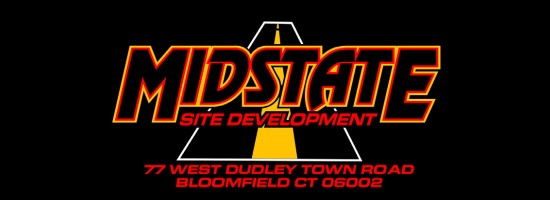

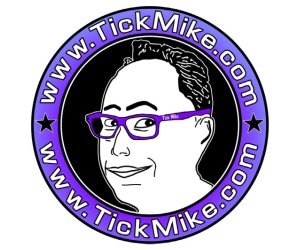


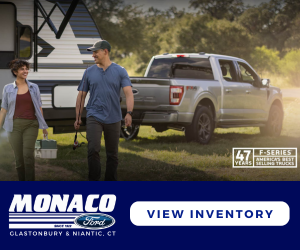










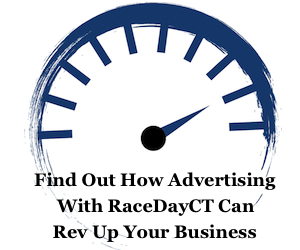


Speaking of quarantine…. let’s examine South Dakota since it has become one of the nation’s worst hot spots.
The Gov. of SD, Kristi Noem (R), refused to call a lockdown.
From The Washington Post, “As governors across the country fell into line in recent weeks, South Dakota’s top elected leader stood firm: There would be no statewide order to stay home.
Such edicts to combat the spread of the novel coronavirus, Gov. Kristi L. Noem said disparagingly, reflected a “herd mentality.” It was up to individuals — not government — to decide whether “to exercise their right to work, to worship and to play. Or to even stay at home.”
And besides, the first-term Republican told reporters at a briefing this month, “South Dakota is not New York City.”
But now South Dakota is home to one of the largest single coronavirus clusters anywhere in the United States, with more than 300 workers at a giant pork-processing plant falling ill. With the case numbers continuing to spike, the company was forced to announce the indefinite closure of the facility Sunday, threatening the U.S. food supply.”
Now SD is one of the nations worst hot spots.
For perspective,
Connecticut is 5,543 sq mi. South Dakota is 77,184 sq mi. or 14 times the size of CT.
The population of CT is 3,565,000. The population of South Dakota is 884,659, or 1/4th the population of CT.
People per sq mi: CT = 643 SD = 11.5
Much of this problem is taking place in Sioux Falls, a “city” of 182,000. It is the state’s largest city.
But the decision to refuse to social distance resulted in a terrible hotspot in an extremely low population density rural region. What a shame.
One of the largest and important pork processing plants is in Sioux Falls, SD and has been shutdown because of the spread of COVID-19 through the employees at the plant. The plant has been shutdown indefinitely, thanks to the exercise of stupidity and liberties.
Folks don’t think that this will happen in the low density rural areas. Well, stupid knows no boundaries.
Larson is probably all over now. Too bad, I was always watching to see if he would pay back Rowdy for an incident.
Thanks for that Shawn. Good reading. Gave a little insight.
I know Peter had some health issues recently, hope he’s doing better
Per the data as of this writing:
USA, total tests: 3,100,387
USA, total cases: 614,246
For every 5 tests performed, one person is found to be infected. This is a highly contagious 😷, and the spreading is just beginning. The virus 🦠 still has plenty of pure fresh people left to hunt down, and people that get it are not all immune from reinfection. So we are effectively at 20% of the population infected right now, and only more are going to get infected.
The mortality rate is presently 3.48% and going up. A disturbing trend.
This still has a long way to go to get worse before it can start getting better. Hunker down.
Luckily, the social distancing has helped is a fantastic way to cap the rate of spread and hence the height of the peak.
Social distancing is working folks. We need to get better.
Quarantine Chronicles…
The news is not good. The facts are not good.
Countries that clamped down hard and fast, and were somewhat successful at attenuating right from the outset, are seeing a surge. They tried to reopen and the virus 🦠 is surging.
Folks, those that are railing to reopen are the owners of the country, those that use workers as expendable and consumable resources, to make fortunes for themselves. You, the worker, are nothing but a consumable resource to them.
The country is not closed. The country was turned down to a minimal survival level.
The consensus among the scientists, doctors and experts is that there is no chance of mass gatherings until 2021, SAFE mass gatherings. Furthermore, the experts are saying that humanity will be stalked by COVID-19 until a vaccine is developed. We are living through what others lived through with polio, smallpox, measles, mumps, rubella, tetanus, chickenpox, etc. COVID-19 is our pandemic.
If you want to get back to normal, you must first survive this pandemic. You and all your family and friends must survive this pandemic. The experts have said that this COVID-19 is here to stay, constantly hunting humans, until a vaccine is developed.
NYS Gov. Andrew Cuomo made it clear yesterday that what we are living now is the way it will be until a vaccine is available.
Those that are railing to relax the safety measures that were put in place are those that will make the most money by doing so. These people are the extremely wealthy owners and have the means to protect themselves better than anyone else. And they will use and abuse the worker to do so.
There will always be those that think this only happens to other people, this will never happen to me, don’t tell me what to do, you can’t boss me around, it’s my liberty to do whatever I want, it’s a free country, etc. To those people, just don’t infect anyone else on your way out.
Quarantine Chronicles….
What a difference a couple days makes. Trump declares himself the ultimate, unquestionable power and authority, and then cedes to reality that he is not all powerful, the Governors are going to do what they want, the Governors will ignore him, and he ends up plagiarizing the plans made by ht eGovernors, particularly NYS Gov. Andrew Cuomo. Trump made himself a complete, massive buffoon with declaring he was a king. Even the GOP were laughing at him. What a buffoon. So glad NYS Gov. Andrew Cuomo is running this pandemic for the country. Trump’s May 1 opening date has been annihilated.
But this was the most bizarre thing lately, from yesterday’s White House briefing. Trump was talking about someone he knew that called to say he was COVID-19 positive. Trump then said that four days later, this guy was dead, and the next day he was unconscious. I was watching the internet explode with comments over that. The guy was unconscious a day after he died according to Trump.
Trump appears to be massively sedated lately, or there’s a remote controlled cattle prod installed. He is declining right before our eyes. This is worse than the decline Reagan went through.
NYC just announced that July would be the earliest social restrictions could be reduced. Countries around the world are increasing social restrictions. China tried to reopen and are getting hit with a resurgence, their numbers are billowing. Many areas around the USA are requiring masks now. The numbers, new cases and deaths, are still going up, with deaths in the USA running around 2,000 per day over the last week and slightly increasing.
This is not an issue of the economy. The economy is a victim of the virus. 🦠 Remediate the virus and the economy will be clear to resume As long as the virus is marauding and attacking, and there is no defense, it’s not safe to go out.
Weeks before Easter, Trump announced the USA would reopen on Easter. Didn’t happen. Actually, restrictions have escalated. Since Easter, Trump has declared he was all powerful and is the only person that would decide when the country will reopen, only to be laughed at. Trump said the country will reopen on May 1. That declaration of a May 1 reopening didn’t last a day before it was annihilated. And now Trump is making it look like it is his idea to let the Governors do whatever they want. This must be like reliving his childhood for Trump, he’s being left out all the time, nobody wants to play with him. 🤣🤣🤣🤣🤣
But he sounds so tough and strong!!!!! 😝😝😝😝😝😝😝😝😝
Here’s something to ponder… 🤔. The USA has about 30% of the world’s COVID-19 deaths and about 3.5% of the world’s population. And our count of American deaths is known to be grossly under reported.
The whole world is also under reported. Russia is just admitting to far more cases and deaths, China is fessing up to many more cases, deaths and a resurgence. India will explode soon. The continent of Africa will be ravaged as it has been in previous outbreaks. 😷
But Trump is demanding the social restrictions be removed. His businesses are suffering.
Although there is talk about easing social mobility, there are still no metrics to do so. Many states, counties and such are actually increasing mobility restrictions due to the persistence and rise of cases and deaths.
The very scary part of this is that a large percentage of the population are asymptomatic. The aircraft carrier has been found to have about 60% of the crew testing as asymptomatic. Consider 60% of the population as spreaders that do not show symptoms. Read up about Typhoid Mary.
Folks, this ain’t over until a vaccine 💉 is available.
Folks, this is going to get much worse and last for several more months.
Anybody watching NYS Gov. Cuomo now?
Well, you guys ever see one of those gas powered augurs for drilling post holes or a hole in the ice for fishing?
Cuomo just used one of those to rip Trump a new one. And another, and another, and another…
🤣🤣🤣🤣🤣🤣🤣🤣🤣🤣🤣🤣🤣🤣🤣🤣🤣🤣🤣🤣🤣🤣🤣🤣🤣🤣